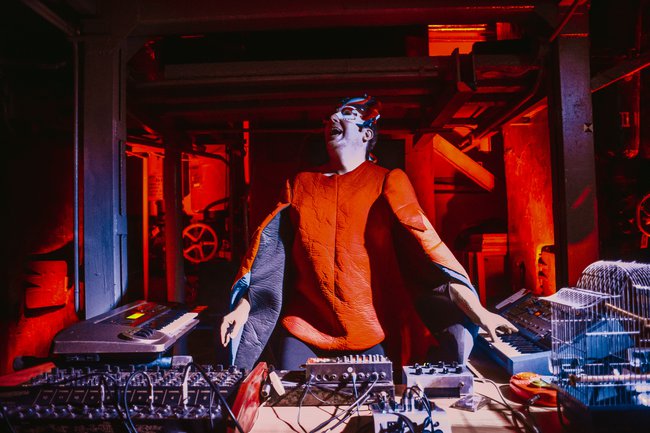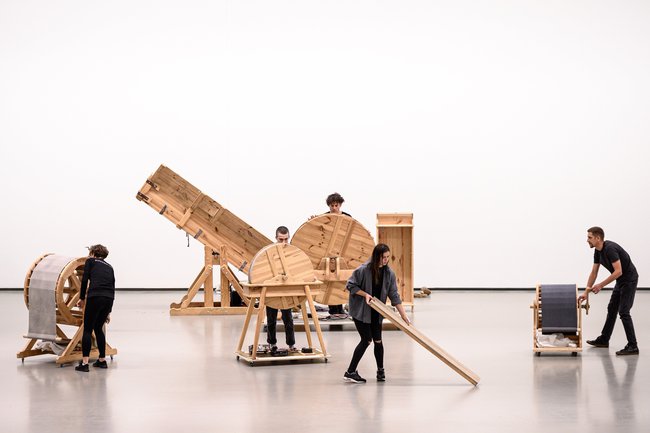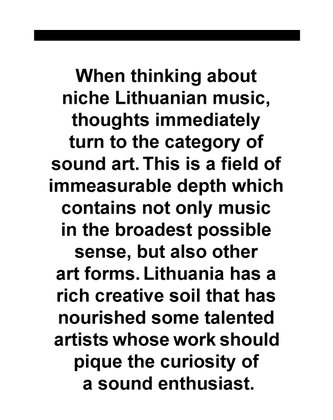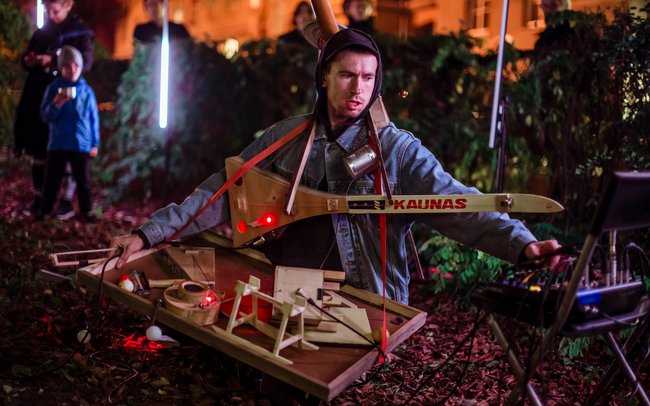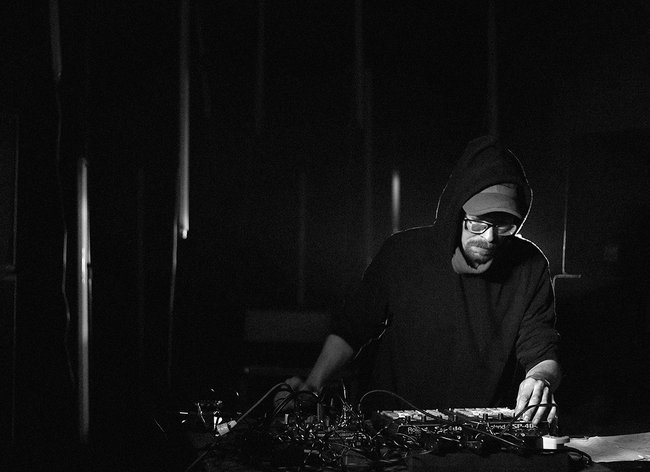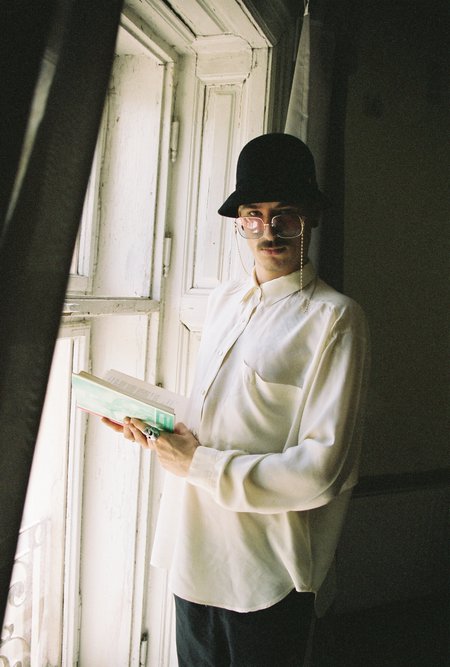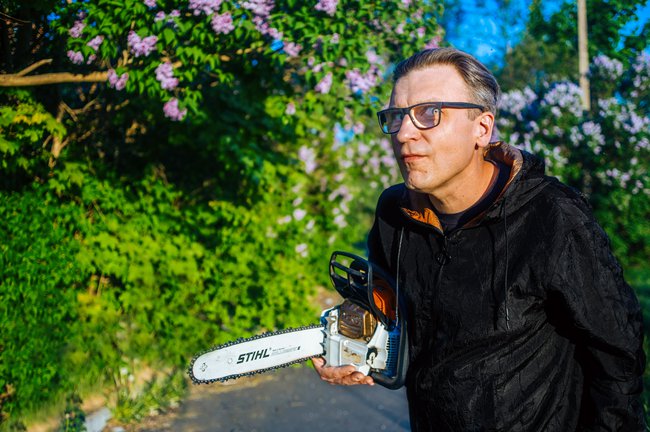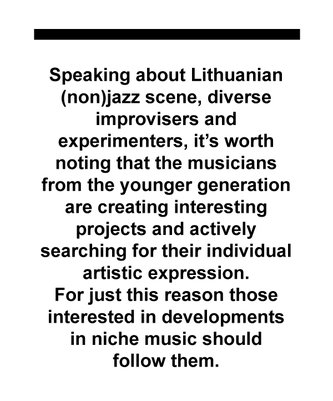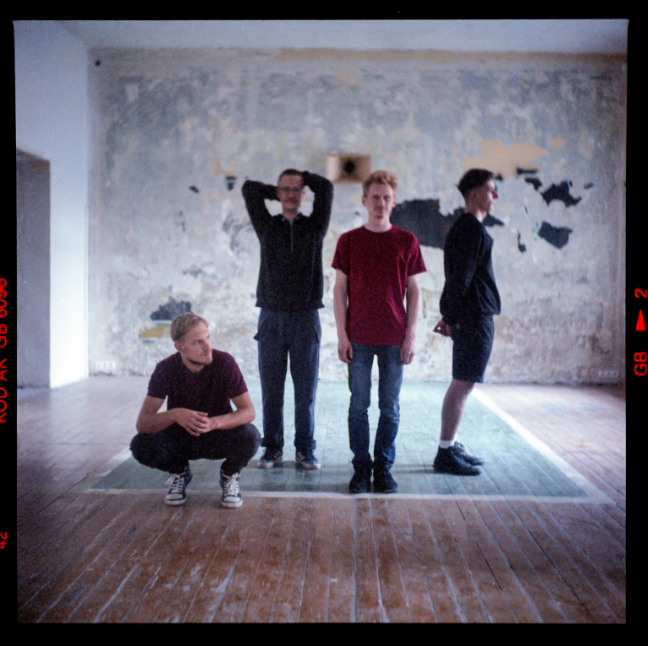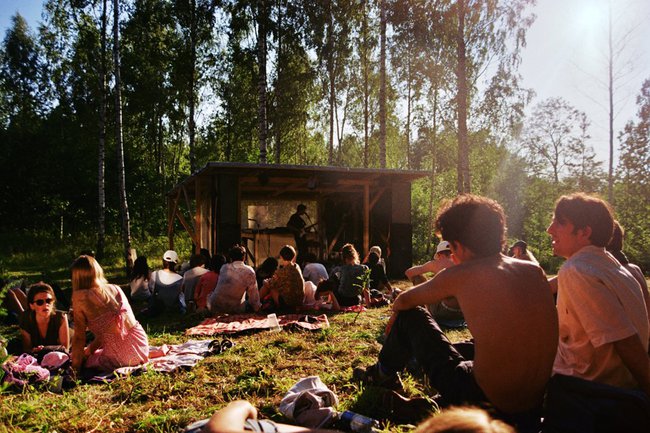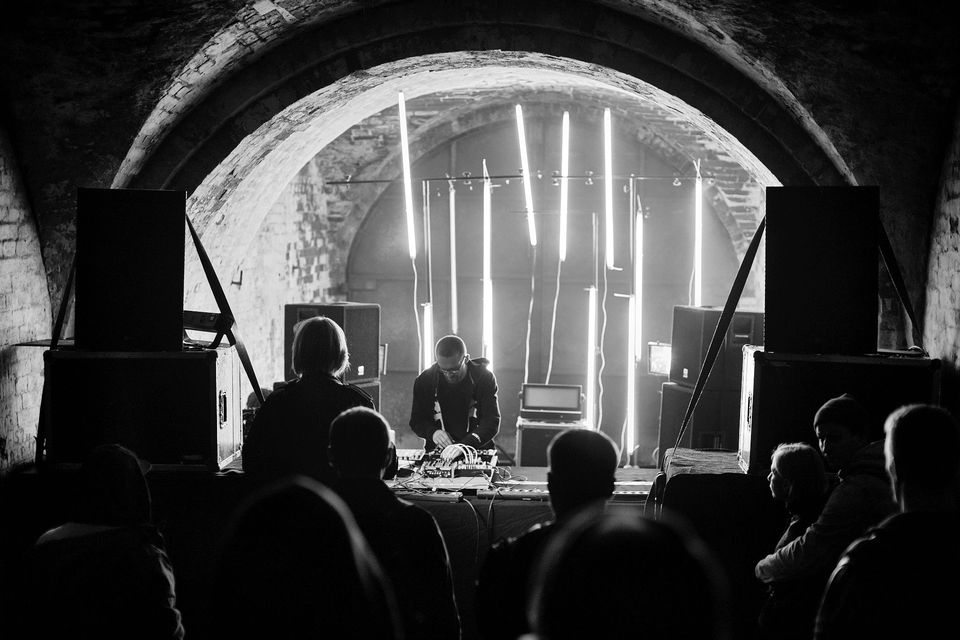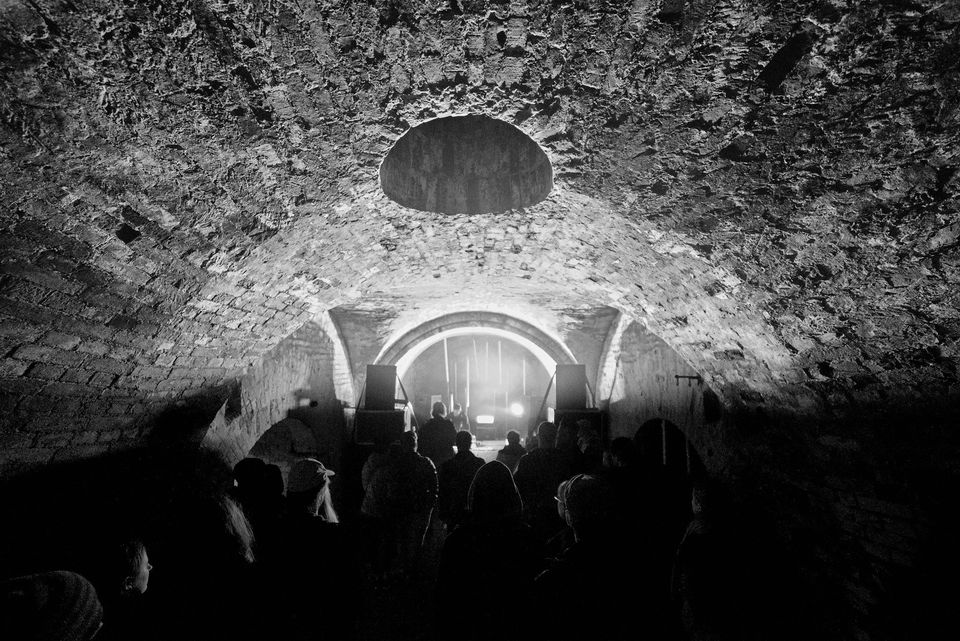Vitalijus GAILIUS | The Niche – a Place Where the Uniqueness of Lithuanian Music Hides
When flicking through the pages of printed dictionaries or scrolling through digital entries, ‘niche’ does not seem to be a word that is related to music at all. Architecture, biology, business… These are the fields in which the term is most commonly found. But whichever field it is used in, its definition will always incorporate words such as narrow, specific, special, etc. All these words come together into something that is not wide-spread or far-reaching, something that seems to be hiding on the dark side of the moon.
However, in musical discourse the word ‘niche’ is not a completely unknown guest. From a musicological perspective, this term is tightly bound to the notion of microgenre, where most unexpected subgenres hide, e.g. cloud rap, shitgaze, zeuhl, crunk, balearic pop, jerkin, etc. So, in the music world, ‘niche’ also means something that is specific, characteristic, which deviates from the usual perception of genres.
It is worth noting that ‘niche’ is not identical to the notion of underground. In other words, not every underground phenomenon may be considered niche. For instance, playing black metal isn’t niche per se. It is one of the major genres in the metal music culture, which is considered to be underground, thus it would hardly be worthwhile to consider it niche. But if someone were to start fusing black metal with Tuvan music heritage and christen it Tuvan black metal, then we could open up a discussion about a niche genre. The fundamental features of a musical niche are therefore a deviation from the dominant current, a journey into the depths and a search for unconventional means of artistic expression. This article is dedicated to showcasing artists whose work embodies these features. Moreover, creative sustainability and productivity have been important factors in selecting the artists. Let us leave aside those who have currently slowed down their activity.
The Infinite Space of Sound Art
When thinking about niche Lithuanian music, thoughts immediately turn to the category of sound art. This is a field of immeasurable depth which contains not only music in the broadest possible sense, but also other art forms. Nevertheless, it is possible to distinguish electroacoustic, acousmatic, field recordings and musique concrète elements when trying to specify the components of sound art. Conceptuality has a special role here. Sonic experiments by artists in this sphere are often inspired by ideas and models from sociology, philosophy, mathematics and other fields (recalling the Italian futurists and Luigi Russolo’s sound experiments), and are thus characterised by the possibility for a profound deconstruction of meaning. Lithuania has a rich creative soil that has nourished some talented artists whose work should pique the curiosity of a sound enthusiast.Firstly, it is worth noting Arturas Bumšteinas. He is one of the most original composers and sound artists in Lithuania. His work includes not only the sonic games, typical of the drone/ambient aesthetic, but also radical sound frequency manipulations, performances combining sound and poetry, etc. Moreover, Bumšteinas stands out for his interest in the history of sound. For him, sound is relevant not only as a physical phenomenon, but also as a historical/cultural component. He finds inspiration in the treasury of old Jewish music, in audio recordings created for treating sleep disorders, in a spectral analysis of a piece by The Beach Boys, or simply in the sounds flowing from the artist’s basement at home. His work enchants with its multiple layers; his compositions are full of symbols and references, just like the magic realism of Gabriel García Márquez.
In addition, Bumšteinas doesn’t belong to the group of sterile sound artists who like pure, computer-based game with sound structures. He leans towards wider experimentation, with live recordings of various instruments and environmental sounds. One of his recent and most notable works, for instance – Bad Weather (2017) – is a performative sound art event centered on sound effect machines used in the Baroque theatre. Of course, he doesn’t avoid using computers, synthesizers or other devices in his sound research, but they mostly interact organically with the acoustically extracted sound.Quite a few sound artists could be labelled as performers, but in terms of performativity Armantas Gečiauskas, or simply Arma, in Lithuania is unsurpassed. Arma started his musical journey in the last decade of the previous century and has become a unique phenomenon on the Lithuanian music scene. One can often hear Arma called a stage shaman. Damn right! Each performance is like a modern act of shamanism where sound curves which escape rational explanation intertwine with Arma’s daredevil motion and fashion show. His performances are closer to postmodern theatre, which broke down the fourth wall, than to a typical concert. Gečiauskas likes to challenge the audience, build a relationship with the people in the room. It’s not surprising to see him running amongst the audience or throwing them a ball.
When trying to define the genre of Arma’s music potentially useful terms include noise, industrial, musique concrète, glitch or even more possible styles and variations. He creates his own sound pool by using various synthesizers, pedal effects, and even children’s toys or household utensils. Anyway, it’s worth mentioning that for the most part it is an improvisational act that takes place in the present moment, here and now.
Another ever more noticeable figure in the Lithuanian sound art niche is Simonas Nekrošius. He is an interdisciplinary artist who specialises in sound art and searches for links between acoustic and electroacoustic territories of sound. Rather than using regular musical instruments, he makes his own, adhering to the concepts of the readymade and do it yourself. Not only is there a so-called bambarimba – a marimba made of plastic bottles – in Nekrošius’ arsenal, but also far more exotic (non)musical instruments: wings made of strings, musical rocking horse modifications or experimental sonic chairs. The instruments designed by him are interesting in terms of both sound and design. They are aesthetically attractive, imitating animals or buildings. They are like sound sculptures. Simonas Nekrošius could be considered a Lithuanian Yuri Landman.Nekrošius is characterised by spontaneity and ambiguity, as if he were another fluxus adventure seeker. His performances are strange not only for the ear, but also for the eye. He is a highly performative artist who can play from the top of his music decks or sometimes invite listeners to enjoy the sounds of a washing machine spinning.
Darius Čiuta – an architect playing with sounds – also sits in the Lithuanian niche. His status as one of the most ascetic and minimalist representatives of the Lithuanian scene is evident when listening to his piece -13PAL- (2013), which has the sound of the sea recorded at the coastal town Palanga as its main motif.
In his early work, Čiuta frequently experimented within the framework of noise aesthetics, but he eventually immersed himself into the vortex of click & cut, microsound, field recordings, sound design or simply conceptual sonic expression and now attracts more attention from the international niche labels and event organisers than from the local sound fans. Furthermore, architectural thinking, when a building is being assembled part by part, accords with Čiuta’s sound works. Of course, this is not a glorious baroque or sky piercing gothic, this is more like Scandinavian minimalism or functional Bauhaus.Unconventional Electronic Music
It is worth noting that the majority of artists on the unconventional electronic music scene in Lithuania have come or are coming out of the metal genre. This means that hypothetically the aesthetic/ideological side of metal music, and especially black metal, exerts a strong influence on Lithuanian electronic music experiments, which manifests itself through cold, harsh sounds that, at times, seem almost misanthropic. At the same time, the reinterpretation of folk music is very important, which brings regionally specific nuances to Lithuanian electronic music.In order to forestall any possible speculations, I would like to mention that Laurynas Jukonis and Donatas Bieliauskas (a.k.a. Donis) won’t be included in this section. The work of these excellent and important Lithuanian niche music artists was discussed in the previous editions of this magazine, so I would like to highlight some less mentioned artists.
Let’s begin with Povilas Vaitkevičius. He has the same background as Laurynas Jukonis, both came to the electronic/neo-folk scene through metal. The artist’s main projects of expression are Vilkduja, sunken in the neo-folk/trip-hop/industrial aesthetic, and Oorchach, pulsating with cold noise/industrial elements.
These two projects suggest the dualism of Vaitkevičius. Vilkduja, where the written tradition – the word – is very important, shows more gentle side. The word in particular means a lot in the context of Vilkduja. The texts, as if streaming from the unconscious, suck the listeners into a surrealist universe where catchy rhythmic structures simply make them forget everything around them. Oorchach, however, reveals the rougher and colder side of his work. There, the meaning of the word disappears, and all narrative construction relies on sound. The music, composed in the framework of the industrial genre, creates the soundscape of a bleak, urbanised space through the use of harsh noises, continuously overlapping with the minimalist and slow drone-style passages. It seems that Vilkduja represents the natural/sensual aspect, while Oorchach – the technocratic/rational side of creativity.
A few years ago, Karkasas created a lot of excitement on the unconventional electronic music scene. The artist, hiding his identity under a beekeeper’s mask, was stirring the imaginations of many. It came to light later that Deividas Jaroška, known by many as DJ, was the one behind this project, which offered a jarring mix of industrial, noise and techno music and striking live performances. Recently, he has ventured deeper into the uncharted waters of the niche scene. The music of Karkasas is not cinematic or meditative at all, rather it is a cold concrete noise marked with intense beats that submerges the listener into a dark and derelict industrial district of suburbia.Daina Pupkevičiūtė, better known as Daina Dieva, plays perhaps the purest drone music in Lithuania. She is certainly one of the brightest personalities in niche electronic music who diversifies the rather masculine image of the scene. She creates her soundscape by combining electronic devices, live instruments, recorded environmental sounds, and her own vocals and texts. Deliberate and thoughtful, open to folk hints, marked by minimalist dynamics and sacredness, Daina Dieva’s musical narrative touches listeners particularly deeply. Her music is very cinematographic, so seeing visuals which reinforce the dreamlike feeling of Daina’s live performances is not strange at all.
Unconventional electronic music has a special space in the context of Lithuanian music where there are plenty of noncanonical sound expressions. Exploring the personalities discussed above further will certainly lead to the discovery of projects such as Vėlių Namai, Skeldos, Obšrr, Valemara, Vidinė Ramybė and many others.
Niche in the Niche or (Non)Jazz
The jazz scene in Lithuania, for various historical reasons, has an exceptional feature – free jazz variety is dominant there and it currently drifts towards the field of improvisational music. So as oxymoronic as it may sound, the Lithuanian jazz scene is dominated by (non)jazz. On the other hand, free jazz or improvisational music is already a niche direction itself, characterised by a narrow circle of listeners, specialised labels and an idealistic devotion to music. But even in this remote corner some musicians receive less of the limelight than others. For this reason, it would be good to discuss a few musicians and bands other than Liudas Mockūnas, Arkadijus Gotesmanas or the legendary Ganelin Trio members.
Juozas Milašius is an old-timer of Lithuanian jazz/improvisational music and a guitar (non)music genius. Although Milašius can be seen in the major Lithuanian jazz festivals, and sometimes even playing with an orchestra at the Congress Hall in Vilnius, whatever format he shows up in, he always remains, as he has often been called, an enfant terrible. He is a guitarist who cannot be dismissed as yet another follower of Derek Bailey or Fred Frith.
His work incorporates New Yorkian no wave, Merzbowian noise and Glenn Branca’s monumentalism. However, attempts to resolve Milašius’ musical riddle suggest that he is a creator looking for a distinctive sound expression. As an academically trained musician Milašius is open about his aim – to liberate himself from knowing how to play by advancing towards a higher, purely creative state. In addition, he urges the others to give up the love of the instrument which, according to him, doomed many of his fellows. So don’t be surprised to see Milašius smashing his guitar on the floor or harshly rubbing the strings.
To create his musical world, he uses standard guitars as well as six-string guitars prepared with contact microphones. With these he creates not only harmonised and relatively melodic narratives, but also sound walls which kick listeners out of the halls.
When looking at the younger generation of artists, it is worth mentioning the duet of DJ Extended feat. Kazimieras Jušinkas. This tandem of two alumni of the Lithuanian Academy of Music and Theatre – flutist Kristupas Gikas and Kazimieras Jušinskas who plays soprano saxophone – offers an extremely characteristic musical formation: the symbiosis of saxophone and turntable.DJ Extended feat. Kazimieras Jušinkas use turntables on the experimental plane, as if turning back to the origins of musique concrète. Almost every melomaniac would be speechless with horror after seeing what DJ Extended does with records and turntables: roughly dropped turntable needles, scratched records, various objects placed on top of them. The performance of DJ Extended, or Gikas, might look like a reincarnation of nineteenth century luddites, only not against the industrial mechanisation, but against the cult of vinyl records. The record player becomes the artist’s tool for building a sound construction reminiscent of postmodern architecture defined by harsh noise, analog loops and a lo-fi aesthetic.
Among the noise of the turntable, Jušinskas’ soprano saxophone maneuvers between free jazz and improvisational music, magically helping to control the chaos. So, DJ Extended feat. Kazimieras Jušinskas is a unique duet able to combine two seemingly irreconcilable elements.
Four talented saxophonists from the younger generation – Arminas Bižys, Kazimieras Jušinskas, Algirdas Janonis and Danielius Pancerovas – work hard in the niche as a collective under the name of Katarsis4. They are active participants in the Lithuanian free improvisational music and jazz scene defined by their search for a particular form of musical expression. They can be seen playing in different setups, as much in the company of their peers as that of established musicians.
The music performed by this quartet is based on aleatoric music principles. Katarsis4 guys disclose the seemingly infinite possibilities of the saxophone in a very subtle way by using instrument preparation techniques. They compose their music with the sounds of household objects (pipes, pots, tennis balls, etc.) and do not avoid electronic inserts and folk elements. The music of Katarsis4 is a tight fabric made of different interwoven musical and life experiences. This collective can by no means be treated as a local equivalent of the World Saxophone Quartet lead by Julius Hemphill; it is a completely different musical universe, unique to the younger generation.Speaking generally about Lithuanian (non)jazz it’s worth noting that the musicians from the younger generation, who often have a wider (rather than jazz only) music education, are entering the Lithuanian music scene very successfully, creating interesting projects and actively searching for their individual artistic expression. For just this reason those interested in developments of niche music should follow the younger generation of Lithuanian improvisers and experimenters.
One for All, All for One
When writing about the development of niche sound in Lithuania, it is necessary to mention a few collective initiatives thanks to which the cultural life in the country sparkles with sensational events. These initiatives may seem disparate, but they make up the entire ecosystem of non-commercial events in the country. Some of them – Improdimensija and Kablys basement XI20 – were discussed in the previous issue of the magazine.
The most iconic, and perhaps the longest lasting, independent cultural initiative based on DIY principles is Empty Brain Resort. This group of people, fronted by Matas Labašauskas, went through a few difficult existential periods, but, still active, they delight with completely non-commercial events. Empty Brain Resort is not just an events company, it’s a movement based at 23 Vitebsko Street in Vilnius. This house sees concerts, film screenings, performances and other gatherings. The modus operandi of Empty Brain Resort is complete independence and conscious resistance to the commercialisation of culture.
By the way, the team behind Empty Brain Resort organises a very cosy festival called Braille Satellite. This event, organised in the surroundings of nature, presents not only quite well-known musicians such as Faust, Squadra Omega or Felix Kubin, but also deeply niche projects whose existence is unknown even to the biggest non-commercial music fans.Some time ago in Lithuania there was an industrial/dark ambient label Autarkeia which was responsible not only for releases, but also for concerts, for example the Nordic Audio Modern festival. Later, platforms such as Kankorėžinės Liaukos Ložė and Terror.lt formed and made quite a few radical electronic releases. These initiatives unfortunately slowed down and reduced their intentions, leading to a vacuum in the Lithuanian scene, which was later successfully filled by GHIA – a group united by admiration for cold sounds inspired by the concrete jungle.
The main activities of this group are event organisation and music releases. Making their start with an event called Nostalghia, this collective takes ever more organisational work. It’s worth noting that GHIA concerts stand out not only for the niche genre artists, but also for the event spaces. One can quite literally say that the niche music of GHIA concerts sounds in the niches, e.g. 3rd Fort of the Kaunas Fortress, a former psychiatric hospital or the old marina in Kaunas reservoir.
Another aspect of GHIA’s work is music releases. The catalogue of this record label is quite diverse: it includes post-black band Erdve as well as the cold techno of PINDROPS. Nevertheless, the various artists they represent are united by their relevancy and non-canonical approach to the genre. Although the releases are produced only in MC format and just in small volumes, GHIA don’t support elitist worldviews and publish their releases on digital platforms as well. So there is no need to hunt for the rare recordings on online auctions to hear something interesting. GHIA is a great space for discovering new bands, performers and projects. The initiative called Nekrokatarsis holds views on extreme electronic music similar to those of GHIA. Their events give a lot of attention to radical electronic music, but the most outstanding feature of Nekrokatarsis is metal. This group focuses on the extreme side of the genre – death/black metal and its varieties (bestial black, occult death metal, esoteric black metal, etc.). Since finding their niche in metal music, Nekrokatarsis has regularly organised concerts and the annual festival Armageddon Descends.This kaleidoscope of niche events would not nearly be so colourful without Kirtimai Cultural Center (KCC). The gloomy sixties building near the Vilnius Airport (Dariaus ir Girėno st. 69, Vilnius) regularly sees many unusual and odd music events. According to the team of this cultural hub, they sow the grains of culture and share the harvest with everybody! Moreover, the team does not only sow these seeds in Vilnius. They tour the smaller Lithuanian towns with their ongoing projects and promote non-commercial music. KCC is a place where the most unexpected musical directions intersect – from sound art to wild punk rock.
Praise for the Niche
Lithuania is far from being part of the world music industry elite. We still are not able to present a band or an artist who can attract masses internationally (unless they are from the opera world, but this time it’s not about them). Sometimes we try too hard to repeat the successes of others, but it would be naive to expect glory for painting another Mona Lisa. In any case, it’s not worth being sorry about this. Looking more closely into the hidden niches of Lithuanian music, it is easy to find plenty of creative and unique musicians capable of capturing the hearts of melomaniacs worldwide. And, to be honest, some have already done so. Of course, their audience is specific and not as large, but that doesn’t mean that their work is any less valuable. On the contrary, history shows that the niche is exactly that invisible avant-garde that offers new forms, which are later adopted by popular culture.
Translated from the Lithuanian by Erika Lastovskytė
